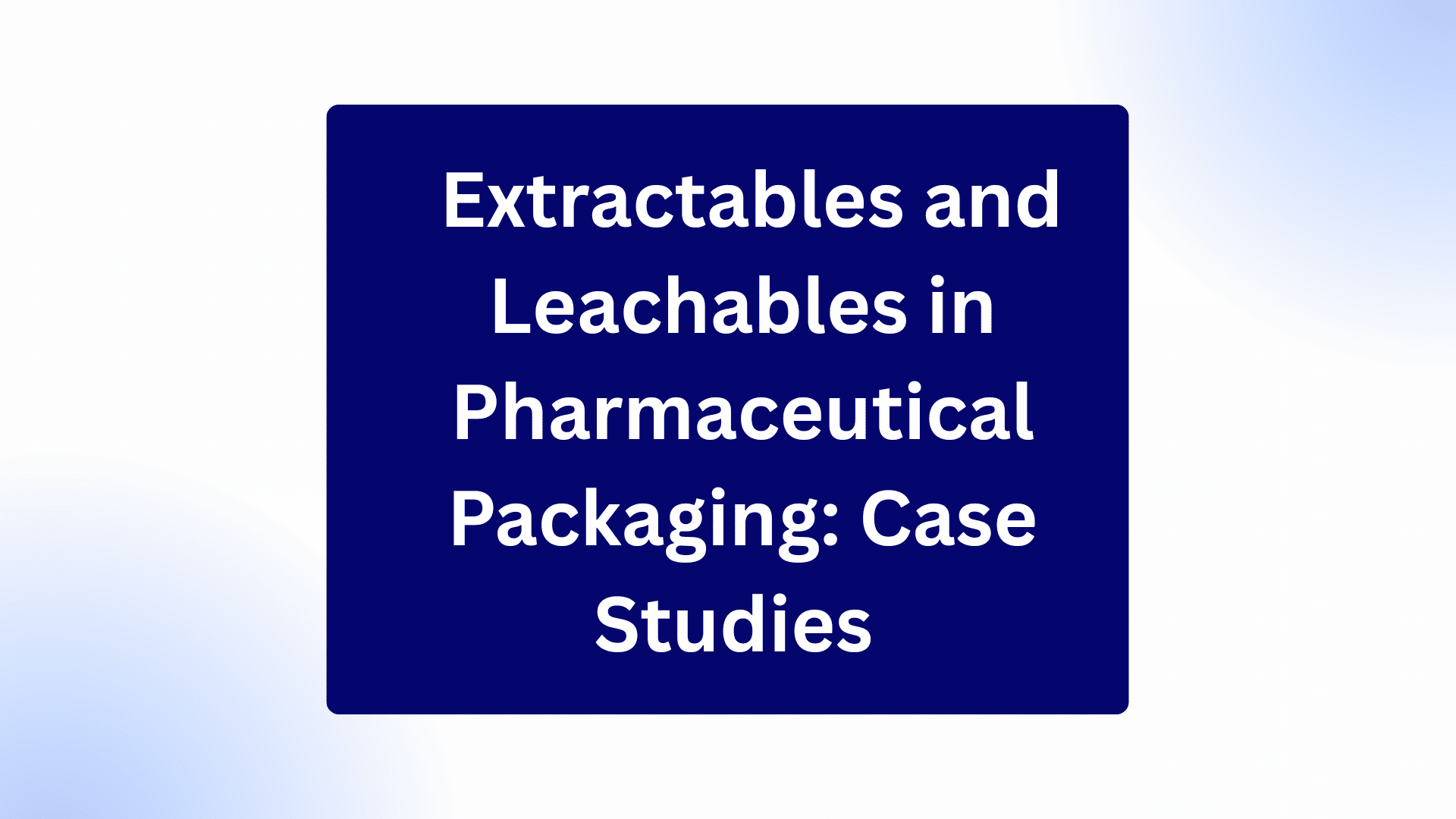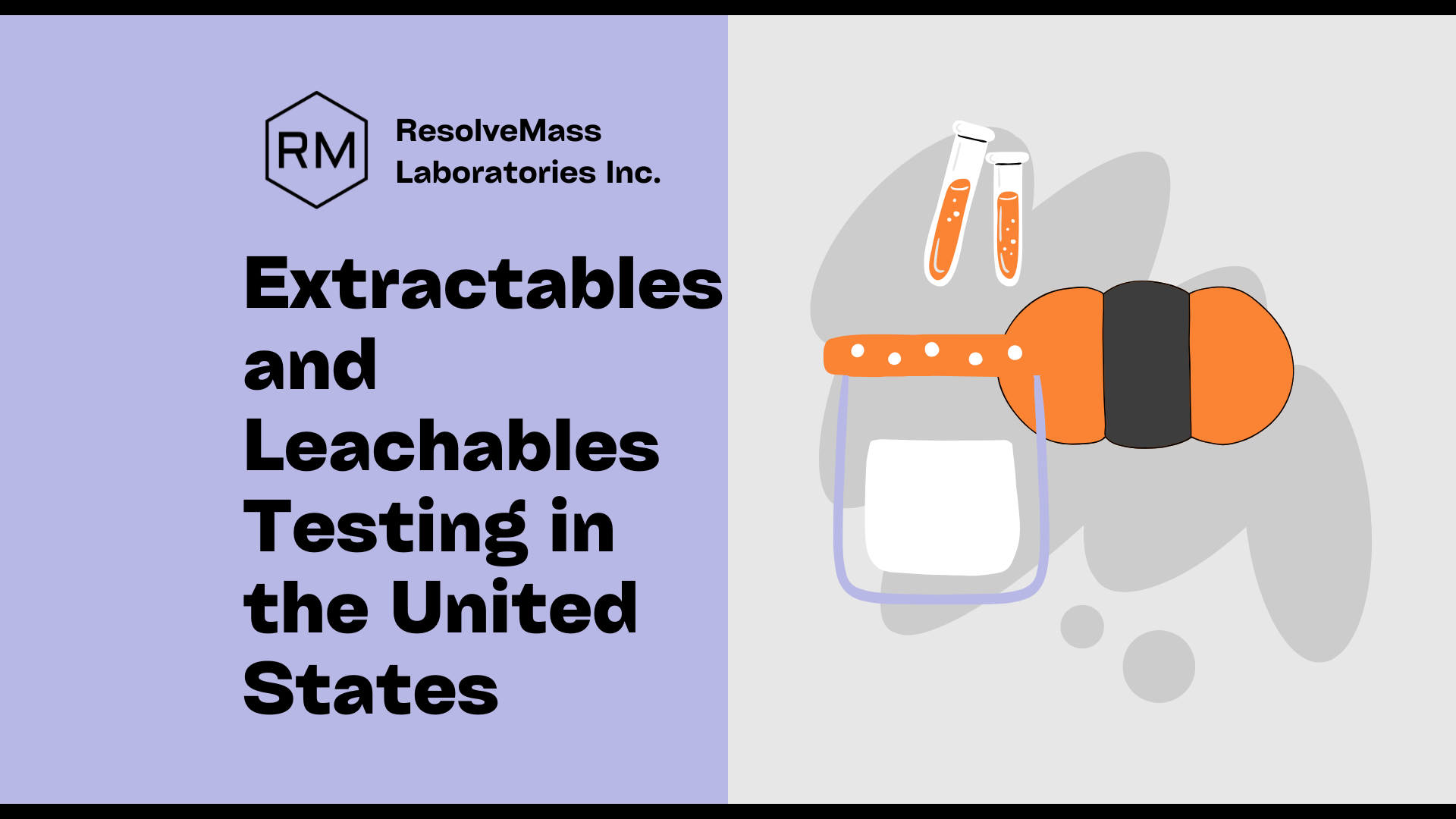Introduction
Extractables and Leachables in Pharmaceutical Products play a critical role in protecting patient safety and ensuring that medicines meet strict global regulations. In pharmaceutical packaging, extractable and leachable testing in pharmaceutical analysis helps detect harmful compounds that may migrate from container closure systems or packaging materials into a drug. At ResolveMass Laboratories Inc., our advanced capabilities in pharmaceutical extractables analysis and extensive E&L pharma case studies demonstrate how a structured approach safeguards product quality and therapeutic effectiveness.
Beyond safety, these studies also serve as crucial evidence for regulatory submissions to agencies like the FDA, USP, and EMA. By conducting detailed evaluations, pharmaceutical developers avoid costly delays, recalls, and compliance issues. With the rapid growth of biologics and complex therapies, packaging systems are becoming more sophisticated, which makes a strong E&L testing strategy more important than ever.
Summary of the Article
- Extractables and leachables (E&L) testing is essential for detecting chemical contaminants in medicines.
- Case studies show real-world examples of packaging-related risks and how they are managed.
- Key testing methods include controlled extractables studies, leachables simulation, and regulatory-driven guidance.
- Common extractables: plasticizers, stabilizers, residual monomers, and rubber oligomers.
- Pharmaceutical extractables analysis supports drug approval and compliance with FDA, USP, and ISO standards.
- E&L pharma case studies provide cost-effective testing approaches tailored for pharma needs.
- ResolveMass delivers customized study designs, CRO support, and multi-matrix testing solutions.
By focusing on these insights, this article highlights how E&L testing prevents contamination events, protects patients, and reduces long-term costs for pharmaceutical companies.
What Are Extractables and Leachables in Pharmaceutical Products?
Extractables are chemical compounds that packaging materials release under aggressive laboratory stress conditions, while leachables are those that actually migrate into the drug product during its real storage and use. Understanding both is critical for ensuring medicine safety and maintaining the drug’s therapeutic value.
Key Points:
- Extractables: Potential risks observed during stress testing.
- Leachables: Actual contaminants detected in the drug product.
- Combined testing: Essential for safety and global regulatory compliance.
A strong program for extractables and leachables in pharmaceutical products allows companies to identify hidden risks early. Controlled extractables studies simulate worst-case conditions, while leachables studies confirm whether compounds migrate into the medicine under real use.
👉 Learn more in our detailed FAQs on Extractables and Leachables Testing
Why Is E&L Testing Crucial in Pharmaceutical Packaging?
Extractable and leachable testing in pharmaceutical analysis ensures that packaging materials remain safe and do not compromise the medicine’s integrity. Global regulatory bodies such as the FDA and USP require thorough E&L studies before approval.
Direct answer upfront: Without E&L testing, drugs can face contamination, stability problems, and even regulatory rejection.
Benefits include:
- Protecting patients from harmful contaminants.
- Preventing expensive recalls linked to packaging issues.
- Providing data for FDA, USP <1663>/<1664>, and ISO 10993-18 submissions.
- Strengthening trust in medicine quality and brand reputation.
In addition, E&L testing supports long-term product lifecycle management. Whenever packaging suppliers change or new markets are targeted, testing ensures safety and compliance remain consistent worldwide.
👉 Learn more about USP extractables and leachables requirements
Case Studies: Extractables and Leachables in Pharmaceutical Packaging
Case Study 1: Leachables in Plastic IV Bags
A hospital reported adverse patient reactions linked to IV solutions. Pharmaceutical extractables analysis revealed DEHP, a plasticizer, leaching from PVC bags into the drug. Controlled extractables studies confirmed migration under typical storage conditions.
Outcome: The packaging material was replaced with safer alternatives.
Insight: This case shows how widely used materials can carry hidden risks, especially in high-volume parenteral applications.
Case Study 2: Oligomer Migration from Rubber Stoppers
In a sterile injectable, oligomers leached from rubber stoppers and were detected using advanced LC-MS techniques. Regulators required a detailed risk assessment and redesign of the closure system.
Outcome: A validated extractables study reduced future risks.
Insight: Even trace levels from closures can impact drug stability and patient safety, stressing the importance of closure integrity.
👉 Read more about controlled extractables study methods
Case Study 3: Stabilizer Migration in Biologics Packaging
During stability studies of a biologic drug, stabilizers from polymer-based packaging migrated into the medicine. This E&L pharma case study showed how leachables reduced potency.
Outcome: A multi-matrix testing approach secured long-term safety.
Insight: Biologics, being sensitive molecules, require carefully designed packaging and tailored E&L studies.
👉 Explore multi-matrix E&L testing services
Case Study 4: Unexpected Leachables in Syringe Systems
An auto-injector system developed discoloration in its drug solution. Testing confirmed phthalates and residual monomers as the cause.
Outcome: The manufacturer collaborated with a CRO for E&L testing, avoiding market withdrawal.
Insight: Even secondary components like syringes can influence product quality, highlighting the value of specialized CRO partnerships.
👉 Check our CRO for E&L testing services
Common Extractables in Pharmaceutical Packaging
| Category | Examples | Risks |
|---|---|---|
| Plasticizers | DEHP, DBP | Toxicity, endocrine disruption |
| Oligomers | Rubber by-products | Drug stability issues |
| Stabilizers | Antioxidants, UV blockers | Loss of drug potency |
| Residual Monomers | Styrene, acrylates | Safety and regulatory compliance risks |
Identifying these categories early allows manufacturers to predict risk, strengthen product safety, and simplify the approval process.
👉 Learn about analytical techniques for E&L testing
Analytical Methods for E&L Testing in Pharma
Extractables and Leachables in Pharmaceutical Products require the use of advanced and complementary analytical techniques, including:
- LC-MS / LC-QTOF: Detects trace contaminants.
- GC-MS: Identifies volatile organic compounds.
- ICP-MS: Measures trace metals and elemental impurities.
- HPLC-UV: Detects stabilizers and polymer additives.
By combining these methods, both volatile and non-volatile compounds can be detected with accuracy. Customizing the analytical method to the drug’s formulation ensures reliable results.
👉 Learn more about fast E&L testing services
Regulatory Guidance for E&L Testing
Pharmaceutical extractables analysis must comply with international guidance:
- FDA Guidance on Container Closure Systems
- USP <1663> and <1664>
- ISO 10993-18: Biocompatibility testing
These frameworks provide structure but also flexibility for custom study design. Following them ensures global compliance and smooth regulatory approval.
Conclusion
Extractables and Leachables in Pharmaceutical Products remain one of the most critical aspects of maintaining drug safety and market approval. Real-world case studies prove that without thorough testing, patients face risks, companies encounter recalls, and products face delays. At ResolveMass Laboratories Inc., we provide pharmaceutical extractables analysis and tailored E&L pharma case studies to ensure compliance, safety, and trust.
Proactive testing not only secures approvals but also saves costs by preventing reformulations and avoiding future recalls. As packaging systems evolve, continuous vigilance through E&L testing remains a foundation of pharmaceutical quality assurance.
👉 For expert consultation, visit our Contact Us page
FAQs: Extractables and Leachables in Pharma
Extractables are compounds released from packaging when exposed to extreme laboratory conditions, while leachables are the substances that migrate into the drug product during storage or patient use. Studying both ensures that medicines remain safe and effective throughout their shelf life.
E&L testing is essential because it helps identify chemical risks that may contaminate medicines. By detecting harmful compounds early, manufacturers can protect patients, maintain product stability, and meet strict regulatory requirements. It also prevents costly recalls or approval delays.
Regulatory bodies such as the FDA, USP (<1663>/<1664>), and ISO 10993-18 provide specific guidance for extractables and leachables testing. Following these guidelines ensures that studies are aligned with global expectations, making it easier for pharmaceutical companies to achieve approval in multiple markets.
Packaging components like plastics, elastomers, adhesives, and coatings are commonly associated with leachables. These materials often contain additives, stabilizers, or residual monomers that can migrate into medicines, making them high-risk and requiring detailed analysis.
An extractables study involves stressing packaging materials with solvents, heat, or other conditions to simulate worst-case scenarios. Advanced analytical methods such as LC-MS, GC-MS, or ICP-MS are then used to identify and measure the released compounds, giving insight into possible risks.
Controlled extractables studies focus on identifying potential contaminants under harsh conditions, while leachables studies examine the actual drug product to confirm if migration occurs during storage or use. Together, they provide a complete picture of safety and compatibility.
Challenges often include detecting ultra-trace level compounds, interpreting toxicological relevance, and keeping up with evolving international regulations. Each product requires a tailored study plan to overcome these issues while ensuring accurate and reliable results.
Yes, incomplete or poorly designed E&L studies can slow down FDA or EMA approvals. However, by working with experienced laboratories and using fast testing approaches, companies can minimize these risks and streamline the approval process.
References
- Rozio, M. G. (2025). Correcting detection and quantitation bias in extractables and leachables testing. Journal of Pharmaceutical Sciences, 114(4), 1234–1245. https://doi.org/10.1016/j.xphs.2025.01.001
- Balfour, H. (2022, April 29). Advancing extractables and leachables testing. European Pharmaceutical Review. https://www.europeanpharmaceuticalreview.com/article/170814/advancing-extractables-and-leachables-testing/
- Eckford, C. (2024, January 22). Single-use systems to drive E&L testing market growth. European Pharmaceutical Review. https://www.europeanpharmaceuticalreview.com/news/196367/single-use-systems-to-drive-el-testing-market-growth/

